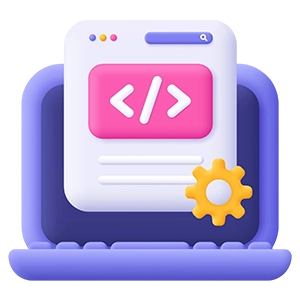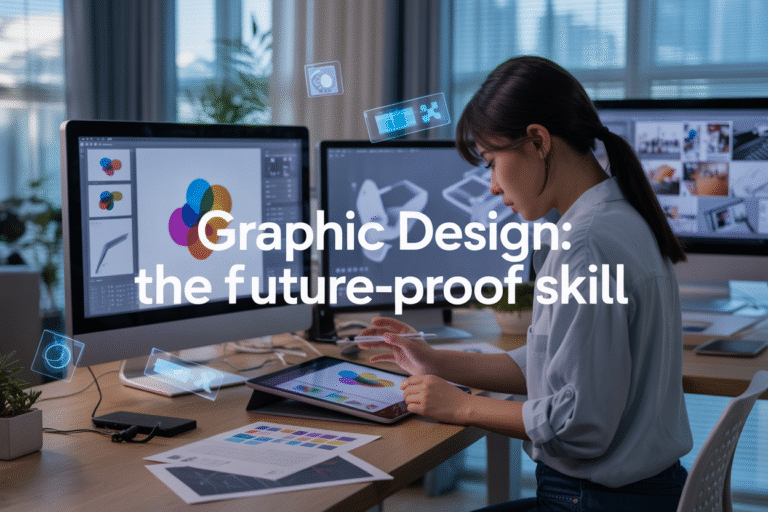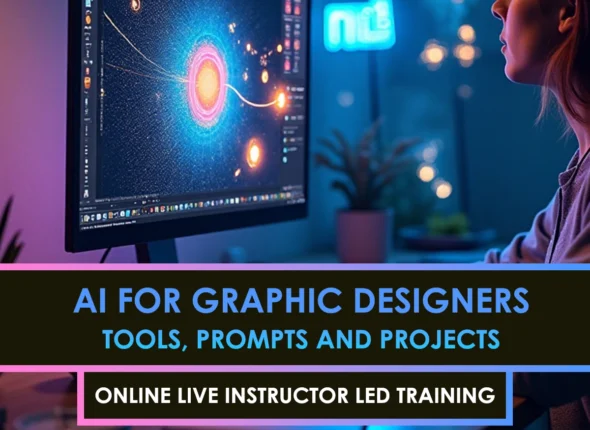Ever seen someone’s jaw drop when you mention you’re a graphic designer? That’s not just respect—it’s envy. Because in 2025, graphic design isn’t just another creative skill—it’s practically a superpower.
Let me save you thousands in career coaching: learning graphic design now could be your smartest move this year.
The digital marketing landscape is absolutely begging for talented designers who can create scroll-stopping visuals. Companies aren’t just hiring graphic designers; they’re fighting over them.
But here’s what most design courses won’t tell you about breaking into this field…
Explosive Industry Growth and Career Opportunities

A. Projected Job Market Expansion Through 2025
The graphic design world isn’t just growing—it’s exploding. By 2025, we’re looking at a job market that’s set to expand by nearly 24% compared to 2020 figures. That’s massive when you compare it to the average job growth rate of 7% across all industries.
Why such a boom? Digital transformation has businesses scrambling for visual content like never before. Companies aren’t just asking for a logo anymore—they need entire visual ecosystems spanning websites, apps, social media, and virtual experiences.
The numbers tell the story:
- 145,000+ new design positions expected by 2025
- 3x faster growth rate than traditional marketing roles
- 89% of companies reporting difficulty filling design positions
The pandemic actually accelerated this trend. When everything went virtual, suddenly every business needed a strong digital presence. That emergency digital shift? It’s now permanent.
B. Rising Demand Across Multiple Industries
Graphic design isn’t just for design agencies anymore. The demand has spread like wildfire across practically every industry.
Healthcare needs designers for patient education materials and intuitive interfaces. Fintech companies are fighting for designers who can make complex financial data digestible. Even manufacturing and agriculture—traditionally analog industries—are seeking designers for everything from product visualization to data presentation.
The top industries hiring designers in 2025:
| Industry | Growth Rate | Most Requested Skills |
|---|---|---|
| Tech | 37% | UI/UX, motion graphics |
| E-commerce | 32% | Product visualization, social media |
| Education | 29% | Instructional design, animation |
| Healthcare | 26% | Information design, accessibility |
| Finance | 23% | Data visualization, branding |
C. Increasing Freelance Opportunities
The 9-to-5 design job is just one option now. Freelance opportunities are through the roof.
Nearly 40% of all graphic design work is now handled by freelancers—up from 24% in 2019. Platforms like Upwork report design gigs increasing by 31% year-over-year, with no signs of slowing down.
Why the freelance boom? Companies want flexibility. They need specialized design skills for specific projects without committing to full-time salaries. And designers are loving the freedom too.
The remote work revolution sealed the deal. Geographic barriers have vanished. A designer in Boise can work for clients in Boston, Berlin, or Bangkok without leaving their home office.
D. Competitive Salary Trends for Designers
The money’s getting good. Really good.
Entry-level designers are starting around $52,000 annually—up 18% from 2020. Mid-career professionals are hitting the $75,000-$95,000 range. Senior designers with specialized skills? They’re breaking into six figures without breaking a sweat.
Specialized design skills command serious premiums. Motion graphics specialists earn 24% more than general designers. UX designers are pulling in 32% higher salaries on average.
The best part? These numbers keep climbing. Salary growth for designers is outpacing inflation by about 3.5% annually. That upward trajectory shows no signs of flattening as companies compete fiercely for top talent.
Digital Transformation Driving Design Needs

Social Media’s Constant Visual Content Requirements
The digital universe never sleeps, and neither does social media. Brands now pump out visual content 24/7 across multiple platforms, creating a massive demand for designers who can keep up.
Instagram alone sees over 95 million photos uploaded daily. Think about that. Companies need someone who can make their posts stand out in that tsunami of content.
What worked yesterday won’t work tomorrow. Social platforms constantly change their image specs, features, and algorithms. Designers who understand these shifts are worth their weight in gold.
Here’s what businesses desperately need:
- Stories that vanish in 24 hours
- Carousel posts that engage longer
- Video thumbnails that get clicks
- Profile graphics that build brand recognition
- Ads that stop the scroll
And they need these yesterday.
E-commerce Boom Requiring Product Design
Online shopping isn’t just growing—it’s exploding. Global e-commerce sales hit $5.7 trillion in 2022 and they’re projected to reach $8.1 trillion by 2026.
Behind every successful product page sits a designer who knows how to make products irresistible without customers being able to touch them.
Product photos need editing. Mockups need creating. 3D renderings need perfecting. Someone’s gotta do it—why not you?
The most successful online stores invest heavily in:
- Product photography enhancement
- Custom packaging design
- Banner ads that convert
- Email marketing visuals
- Product configurators showing customization options
Virtual Reality and Augmented Reality Design Expansion
VR and AR aren’t just for gamers anymore. They’re transforming how we shop, learn, and interact with the world.
By 2025, the AR/VR market is expected to hit $296.9 billion. Companies are scrambling to find designers who understand this new frontier.
Traditional design skills aren’t enough here. VR/AR designers need to think about space, movement, and interaction in completely new ways.
Some mind-blowing applications include:
- Virtual shopping experiences
- Interactive educational environments
- Architectural visualizations
- Medical training simulations
- Entertainment experiences that blur reality
Mobile App Interface Design Demand
There are over 7 billion mobile users worldwide. Each one interacts with dozens of apps daily.
Bad design = deleted app. It’s that simple.
Companies are fighting for screen real estate, and they need designers who understand the unique constraints and opportunities of mobile interfaces.
The best mobile designers know how to:
- Create intuitive navigation systems
- Design for thumb zones
- Optimize for different screen sizes
- Balance aesthetics with performance
- Create microinteractions that delight users
AI-Generated Content Needing Human Design Refinement
AI tools like DALL-E and Midjourney are creating images in seconds. But don’t panic about your job—these tools need human designers more than ever.
AI generates options. Humans provide vision, judgment, and emotional intelligence.
The most successful designers today are those who can:
- Direct AI to generate useful starting points
- Refine AI outputs to match brand guidelines
- Add the human touch AI can’t replicate
- Combine AI-generated elements into cohesive designs
- Know when to use AI and when to create from scratch
The relationship between designers and AI isn’t competition—it’s collaboration. And someone who masters this partnership will be unstoppable in 2025.
Accessible Learning Paths

Online Courses and Certification Options
Gone are the days when learning graphic design meant expensive art school tuition. In 2025, the internet is bursting with high-quality courses that won’t drain your bank account. Sites like Udemy, Coursera, and LinkedIn Learning offer everything from beginner basics to advanced animation techniques.
What’s really cool is how specialized these courses have become. Want to focus just on logo design? There’s a course for that. Need to master UI/UX specifically? Dozens of options await. And the best part? Many platforms offer certificates that actually carry weight with employers.
Check out these popular options:
| Platform | Best For | Price Range |
|---|---|---|
| Skillshare | Beginners & hobbyists | $15/month subscription |
| Domestika | Creative technique mastery | $12-40 per course |
| Coursera | University-backed credentials | $39-79/month or free auditing |
| YouTube | Quick tutorials & tips | Free |
The secret nobody tells you? Many top designers today are self-taught through these exact resources.
Affordable Software and Tool Alternatives
Adobe’s Creative Cloud used to be the only game in town. Not anymore.
Affinity Designer, Affinity Photo, and Affinity Publisher offer one-time purchase alternatives to Illustrator, Photoshop, and InDesign at a fraction of the cost. Then there’s Figma, which revolutionized UI design and collaboration with its freemium model.
Open-source options like GIMP and Inkscape keep improving every year. And web-based tools like Canva have made basic design accessible to literally everyone.
Some budget-friendly options that still pack a punch:
- Procreate: $9.99 one-time purchase (iPad only)
- Figma: Free for individuals, $12/month for professionals
- Affinity Suite: $54.99 each app, one-time purchase
- Canva Pro: $12.99/month with templates galore
The tools you choose should match your goals. Starting out? Free options work perfectly. Getting serious? Consider investing in one or two specialized tools rather than the whole expensive suite.
Growing Community of Design Mentors
The design community in 2025 is wildly generous with knowledge sharing.
Discord servers dedicated to graphic design critique are booming. Instagram accounts run masterclasses in their Stories. Senior designers regularly offer portfolio reviews on Twitch streams.
Mentorship platforms like ADPList connect beginners with experienced professionals for free guidance sessions. And communities like Dribbble and Behance aren’t just for showcasing work—they’ve become hubs for feedback and growth.
Self-Paced Learning Opportunities
The beauty of learning graphic design in 2025? You set the schedule.
Working full-time? Learn design for 30 minutes each morning. Parent with unpredictable hours? Squeeze in tutorials during nap time. Night owl? 2am design sessions are totally valid.
Project-based learning has taken center stage. Instead of following rigid curriculums, many learners create real-world projects from day one. Build a brand identity for an imaginary company. Redesign a terrible website. Create a poster series for your favorite movies.
This approach builds your portfolio while you learn—killing two birds with one stone.
Technology Advancements Enhancing Design Capabilities

AI-Assisted Design Tools Boosting Productivity
Graphic design in 2025 is nothing like it was even five years ago. The tools have gotten ridiculously smart.
Remember spending hours manually adjusting elements or searching for the perfect font? Those days are pretty much over. AI tools now analyze your project goals and suggest design elements that actually make sense for your target audience.
Take Adobe’s Sensei, which has evolved from basic photo enhancement to practically reading your mind. It now predicts your next design move based on your personal style and habits. Start a logo design, and it’ll suggest color palettes that align with your client’s industry before you even ask.
Canva’s AI assistant has also transformed from a simple template tool to a design partner that can generate entire layouts based on a few keywords. Type “modern tech startup pitch deck” and watch as it builds a cohesive 20-slide presentation in seconds.
The real game-changer? These tools learn from your feedback. The more you use them, the better they get at matching your style. They’re not replacing designers – they’re supercharging them.
Cloud-Based Collaboration Platforms
The days of emailing design files back and forth are officially dead and buried.
Cloud platforms have completely reimagined how design teams work together. Figma revolutionized the field by allowing multiple designers to work on the same file simultaneously – and now every major design platform has followed suit.
What’s changed for 2025 is the depth of these collaboration features:
- Real-time client feedback directly on design elements
- Version history that’s actually intelligent (showing meaningful changes, not just timestamps)
- Automatic asset organization across team members
- Cross-platform compatibility that actually works
The coolest part? These platforms now integrate with project management tools to create unified workflows. Start a design in Figma, and your tasks automatically update in Asana or Monday.com.
Advanced 3D Modeling Technologies
3D design isn’t just for specialized studios anymore. It’s becoming a standard skill for graphic designers, and the technology has gotten surprisingly accessible.
The latest modeling tools have stripped away the complexity that used to make 3D design so intimidating. Programs like Blender and Cinema 4D now include AI-powered modeling that can transform 2D sketches into 3D objects with stunning accuracy.
Web-based platforms like Spline have dramatically lowered the entry barrier, letting designers create interactive 3D elements directly in the browser. No massive software installations or high-end computers required.
For product designers, augmented reality previews have become standard. Clients can now see packaging designs or store displays in their actual physical space before a single physical prototype is made.
The most exciting development? Real-time rendering engines. What used to take hours to render now happens instantly, letting designers experiment with lighting, textures, and environments without painful waiting periods.
Personal and Professional Development Benefits

Enhanced Creative Thinking Skills
Ever notice how some people just see the world differently? That’s what happens when you dive into graphic design. You start spotting patterns everywhere, finding inspiration in the most unexpected places.
Graphic design isn’t just about making pretty pictures. It’s a mental workout that transforms how your brain approaches problems. You’ll develop a habit of questioning conventional thinking and exploring multiple solutions rather than settling for the first idea that pops up.
The beauty of training your creative muscles through design is that this skill spills over into everything else you do. That presentation for work? Suddenly you’re thinking about visual hierarchy and flow. Planning your apartment layout? You’re considering spatial relationships and balance.
By 2025, creative thinking will be among the top skills employers look for across industries. Why? Because AI can crunch numbers, but it can’t replicate human creativity and intuition (at least not yet).
Improved Visual Communication Abilities
We live in a world dominated by visuals. Social media, websites, apps—everything screams for visual attention.
Learning graphic design gives you the superpower to communicate complex ideas instantly. Think about it: which would you rather read, a wall of text explaining a concept or a well-designed infographic that shows the same information in seconds?
When you understand design principles, you develop an eye for what works and what doesn’t. Colors, typography, spacing—these aren’t just aesthetic choices but powerful communication tools.
This skill becomes particularly valuable in workplaces where attention spans are shrinking. Being able to distill information visually makes you invaluable, whether you’re creating slides for a meeting or designing a report that actually gets read.
Versatile Portfolio Building Opportunities
The cool thing about graphic design? You can start building a portfolio today. Like, literally today.
Unlike many skills that require years of education before you can demonstrate proficiency, design lets you create tangible work from day one. Each project becomes part of your growing portfolio, showcasing your evolution and capabilities.
Portfolio-building isn’t just for full-time designers either. Maybe you redesign your friend’s business card, create social media graphics for a local nonprofit, or revamp your own resume. Each project adds another dimension to your professional identity.
By 2025, the gig economy will have expanded even further, making portfolios more important than resumes in many fields. Having visual proof of your abilities gives you a serious edge.
Complementary Skill for Various Career Paths
Graphic design is the Swiss Army knife of professional skills.
Marketing manager? Understanding design principles helps you communicate effectively with creative teams and evaluate their work.
Software developer? UI/UX knowledge makes your applications more intuitive and user-friendly.
Small business owner? Creating professional-looking materials saves you money and ensures consistent branding.
The list goes on. In today’s interconnected job landscape, having complementary skills often matters more than deep specialization in a single area. Design thinking gives you that versatility.
Problem-Solving Through Design Thinking
Design thinking isn’t just for designers—it’s a problem-solving framework that’s being adopted across industries.
At its core, design thinking approaches problems from the user’s perspective. What do they need? What obstacles do they face? How can we create solutions that actually work for real people?
When you learn graphic design, you’re also absorbing this human-centered approach to problem-solving. You develop empathy for users, learn to iterate based on feedback, and become comfortable with the messy process of creative exploration.
Companies are increasingly valuing this approach because it leads to better products, services, and experiences. By 2025, expect to see design thinking workshops in corporate environments from healthcare to finance to education.

Graphic design has solidified its position as an essential skill set for 2025 and beyond. The explosive industry growth presents abundant career opportunities while digital transformation continues to drive increasing demand for design expertise. With more accessible learning paths than ever before, aspiring designers can acquire skills through various formats that fit their lifestyle and learning preferences.
Technology advancements have dramatically enhanced design capabilities, empowering creators with powerful tools that streamline workflows and expand creative possibilities. Beyond career prospects, learning graphic design offers significant personal and professional development benefits, fostering creativity, problem-solving abilities, and visual communication skills that translate across numerous fields. Whether you’re seeking a career change, looking to enhance your current role, or simply want to explore your creative potential, 2025 presents the perfect opportunity to dive into the dynamic world of graphic design.
FAQ
1. What are the top reasons to learn graphic design in 2025?
The top reasons to learn graphic design in 2025 include high demand for creative professionals, integration of AI in design workflows, and the rise of digital content across platforms.
2. How is AI influencing the top reasons to learn graphic design in 2025?
AI tools are revolutionizing design processes, making one of the top reasons to learn graphic design in 2025 the ability to work smarter and create faster with automation and smart suggestions.
3. Are remote jobs a part of the top reasons to learn graphic design in 2025?
Absolutely! With remote work booming, one of the top reasons to learn graphic design in 2025 is the opportunity to build a global freelance or full-time career from anywhere.
4. Do branding trends impact the top reasons to learn graphic design in 2025?
Yes, branding trends are evolving quickly, and the need for impactful visual identity is among the top reasons to learn graphic design in 2025.
5. Why are beginners considering the top reasons to learn graphic design in 2025?
Beginners are drawn by the accessibility of tools, online courses, and high ROI careers—major drivers among the top reasons to learn graphic design in 2025.
6. How does motion graphics tie into the top reasons to learn graphic design in 2025?
Motion design is essential for content creators and marketers, making it a key factor among the top reasons to learn graphic design in 2025.
7. Is graphic design a future-proof career? How does this relate to the top reasons to learn graphic design in 2025?
Yes, it's future-proof. This is one of the top reasons to learn graphic design in 2025—visual communication skills remain in demand across industries.
8. Do e-learning and online platforms contribute to the top reasons to learn graphic design in 2025?
Definitely. With a surge in self-paced learning, access to design education from anywhere is among the top reasons to learn graphic design in 2025.
9. How do social media trends affect the top reasons to learn graphic design in 2025?
Social platforms rely heavily on engaging visuals, so content creation is a top reason to learn graphic design in 2025 for aspiring digital creators.
10. Can entrepreneurship be counted among the top reasons to learn graphic design in 2025?
Yes, launching a personal brand or creative agency is easier than ever, making entrepreneurship one of the top reasons to learn graphic design in 2025.













